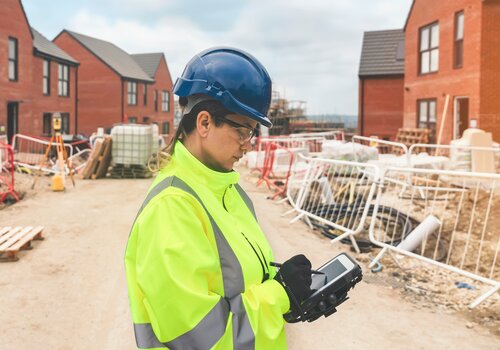The integration of technology can be seen in almost every aspect of a construction project – from planning to site work and everything in between. While enhancing efficiency and project management, integrating technology has introduced a new set of challenges, notably in the realm of cybersecurity.
Protecting sensitive worker and client data has become paramount as cyber threats increasingly target the construction sector, with an 800 percent increase in attacks from 2019 to 2020. And 42 percent of respondents in a 2024 survey are worried about cyber-attacks in the construction industry with 40 percent saying they are not prepared for such an attack.
The time to prepare for such an attack is now—not after you are a victim.
CYBERSECURITY IN CONSTRUCTION
Historically, the construction industry prioritized physical security measures, focusing on safeguarding tangible assets like machinery, materials and on-site personnel. However, the digital transformation in the industry has expanded the scope of assets requiring protection. Modern construction projects now rely heavily on digital tools such as Building Information Modeling (BIM), Internet of Things (IoT) devices and cloud-based collaboration platforms. These technologies, while streamlining operations, also collect and store vast amounts of sensitive data, including architectural designs, financial records and personal information of both clients and employees.
The integration of these digital tools has inadvertently made the construction industry a lucrative target for cybercriminals. A breach can lead to significant financial losses, project delays and reputational damage. Moreover, compromised designs or structural data can pose safety risks, underscoring the critical need for robust cybersecurity measures.
RECENT CYBERSECURITY INCIDENTS
The construction industry has witnessed a surge in cyberattacks, highlighting its vulnerabilities. For instance, a large construction firm in the Pacific Northwest experienced a ransomware attack where the perpetrators leaked confidential human resources information, including employee Social Security numbers and addresses. This breach necessitated immediate notification to affected individuals and implementation of measures to mitigate the damage.
In another case, a small contractor in the Upper Midwest suffered a fraudulent diversion of $735,000. Cybercriminals gained access to an executive’s email account and used a counterfeit notary form to redirect payments to their own account. The developer subsequently filed a lawsuit, alleging negligence on the part of the construction firm for lacking adequate cybersecurity protections.
These incidents underscore the diverse nature of cyber threats facing the industry, from ransomware attacks to sophisticated financial fraud schemes.
Companies must recognize that investing in cybersecurity is not merely a protective measure but a strategic imperative that safeguards their assets, reputation and clients.
PROTECTING SENSITIVE PROJECT DATA
To combat the escalating cyber threats, construction companies must adopt comprehensive cybersecurity strategies. Here are some essential tips to get started today:
Employee Training and Awareness: Human error remains a leading cause of security breaches. Regular training programs can educate employees about recognizing phishing attempts, the importance of strong passwords and safe data handling practices.
Robust Access Controls: Implementing strict access controls ensures that only authorized personnel can access sensitive information. This includes the use of multi-factor authentication and regular audits of user permissions.
Regular Software Updates and Patch Management: Keeping software and systems up to date is crucial in protecting against known vulnerabilities. Regular updates and patches can prevent cybercriminals from exploiting outdated systems.
Data Encryption: Encrypting sensitive data, both in transit and at rest, adds an additional layer of security, making it more difficult for unauthorized parties to access information.
Secure Backup Systems: Regularly backing up data ensures that, in the event of a cyberattack, critical information can be restored with minimal disruption. These backups should be stored securely, preferably off-site or in the cloud.
Third-Party Vendor Management: Construction projects often involve multiple stakeholders, including subcontractors and suppliers. Ensuring that these third parties adhere to stringent cybersecurity standards is vital, as their vulnerabilities can become entry points for attackers.
Incident Response Planning: Developing and regularly updating an incident response plan enables companies to react swiftly and effectively to breaches, minimizing potential damage.
Cyber Insurance: As a contractor, if you are the victim of a cyberattack, you will need help right away to keep projects moving forward, ensure the financial health of your business and the privacy of your clients and workers. Cyber Insurance is made for these situations. There are several types of cyber insurance out there, so make sure to shop around for one that covers your needs.
THE PATH FORWARD
As the construction industry continues to embrace digital innovations that push the industry to be more effective and efficient, the importance of cybersecurity cannot be overstated. Companies must recognize that investing in cybersecurity is not merely a protective measure but a strategic imperative that safeguards their assets, reputation and clients. By implementing comprehensive security protocols and fostering a culture of awareness, the construction sector can build a resilient foundation against the ever-evolving landscape of cyber threats.
Photo credit: WUTZKOH/BIGSTOCKPHOTO.COM












